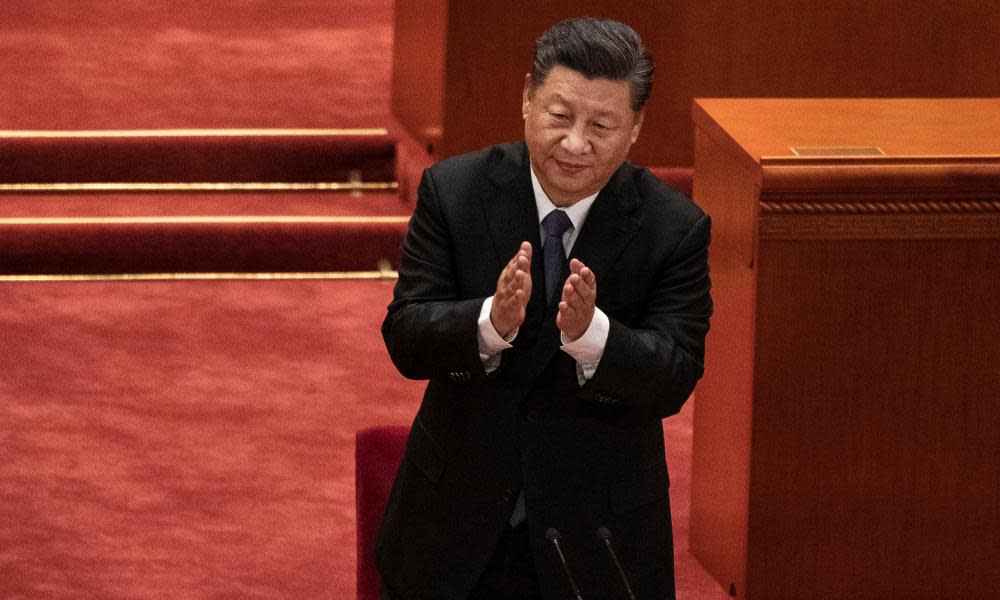Why China's dramatic economic recovery might not add up

Beijing prompted envy, admiration and not a little resentment when it released data last week confirming that it was the first major economy to start growing again after the devastation caused by Covid-19 in the first half of the year.
China appeared to have achieved the V-shaped recovery being chased by finance ministers around the world, after pioneering mass lockdowns to contain the virus that had taken hold in Wuhan, then shutting its borders to stop it filtering back in from abroad.
With the country largely virus-free, people could return to something like normal life in offices, schools, shops and restaurants, and the government encouraged a splurge in investment across infrastructure and new manufacturing.
Government data showed growth of 4.9% between July and September, slightly lower than economists had expected, but still an astonishing achievement.
Analysts have warned, however, that apparent data manipulation, and the details of how China returned to growth – relying more on investment than consumption – raise questions about the strength and durability of the economic revival.
Nick Marro, lead analyst on global trade at the Economist Intelligence Unit, said the figures appeared to show a shuffling of some data to boost the overall GDP growth rate for the third quarter, although he cautioned there was no direct evidence of any data fabrication.
“The Chinese statistical agency is opaque about their methodology, and unless we get more details about their adjustments, we’ll never know the full story. But there does seem to be evidence of a targeted adjustment to help lift that headline figure,” he said.
“The September figures were smoothed by quietly altering the historic basis of comparison; basically, some of the numbers from September 2019 were re-apportioned into October of that year, in order to lower the comparison base. That led to a statistical distortion where the September 2020 growth figures might’ve been artificially inflated.”
The difference in growth rate was not huge, Marro said, but the manipulation suggested the economy might not be as strong as Beijing would have liked people to think. “The bigger implication is that the investment landscape might be more fragile than the official numbers suggest heading into the last quarter of 2020. That’s perhaps the bigger risk for companies to be aware of.”
Leland Miller, chief executive of the China Beige Book consultancy, which tracks the Chinese economy with data it collects itself in addition to government statistics, flagged up what he considered a far more disturbing alteration in the data.
China recorded growth of 0.8% in fixed-asset investment for the first three quarters of the year, compared with 2019, but the absolute figures for the same period showed a drop of several trillion yuan. “This is not toying at the margin. This is making 2.5 trillion yuan in fixed asset investment disappear,” he said.
The only explanation given by Chinese authorities for the discrepancy was that the data had been adjusted to reflect “results of the fourth national economic census, statistical law enforcement and regulation of statistical programmes”, so economists have no way to assess how accurate the revisions are or compare them to other data.
If fixed-asset investment had actually fallen, as the raw data suggested, while consumption was also down, overall GDP growth could be much lower than the headline figure, Miller said. “There are very big lessons here, because people think that China’s back. They’ve done a pretty good job but ... they’re not anywhere near being back to where they were before.”
Meanwhile the pandemic has pushed many western companies to reconsider their dependence on Chinese factories. And while Beijing has for several years called for a “rebalancing” of the economy to boost domestic consumption, it has struggled to make it a reality.
Other long-term challenges including debt and an ageing population have been overshadowed by coronavirus temporarily, but remain no less problematic.
“Even if growth leaps from a low base next year there are still underlying structural problems,” said George Magnus, former chief economist at UBS, and an associate at the China Centre, Oxford University.
“These include growing debt, demographics, poor productivity, a much more hostile external environment for trade, commerce and investment. All of these things are going to weigh on China’s potential for expansion and development.”

 Yahoo News
Yahoo News 
